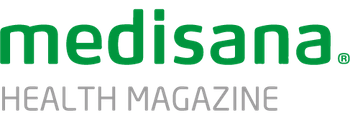Alkaline fasting

In our last blog article we dealt with the topic of therapeutic fasting according to Dr. Otto Buchinger, who began the therapeutic fasting movement. According to Buchinger, fasting activates the body’s own power to heal itself. Buchinger’s model of therapeutic fasting is still considered a classic among fasting methods.
Improve your ability to heal yourself
According to Buchinger, therapeutic fasting allows the body to cleanse itself and activate its own powers of self-healing, not only on a medical level, but also on a psychosocial and spiritual level. Buchinger also talked of a “diet for the soul”. Followers of his method should avoid solid food while fasting, instead opting for vegetable broth, tea, juices and water. Colonic cleansing is an integral part of his method.
In another article on fasting, we talked about “fasting according to St. Hildegard von Bingen”. Hildegard von Bingen warned against fatty foods, gluttony and excessive feasting – for her the cause of most human diseases.
According to Hildegard von Bingen, everything is interrelated: people, the environment, body and soul. Statements like: “First you must heal your soul, then the body can follow” made a big impression on us. In our blog article on the subject of intermittent fasting we already talked about how, nearly a thousand years ago Hildegard von Bingen proposed a “fasting phase” of 13 to 17 hours a day, thus anticipating today’s 16:8 fasting model. There are two methods of intermittent fasting.
Firstly, the 16:8 method: there should be 16 hours between the last meal of the day and the first meal of the following day. During the eight hours that you’re allowed to eat, you have two meals. Secondly, the 5:2 method: you eat normally five days a week and almost nothing on the other two days. The goal of both these methods is long-term weight loss. We came to the conclusion that the 16:8 method is the more practical of the two.
Popularised by Eckart von Hirschhausen
The 16:8 method is currently the most popular fasting method in Germany, after Eckart von Hirschhausen discussed it in detail in “Stern”. He explained: “It’s not a diet, rather a way of eating. You don’t have to count calories, you watch the time instead. Instead of “Eat half the amount”, it’s “Eat half the time!” By the way: the word “diet” originally meant “way of life“. These days, people call it the “Hirschhausen Diet“.
What is an alkaline diet?
An increasing number of magazines, radio shows and TV programmes are currently reporting on the alkaline diet. This suggests that the topic is growing in popularity. Strictly speaking, it is not a diet, but a way of eating.
The Swedish chemist and nutritionist Ragnar Berg (1875-1956) is considered to be one of the founders of the alkaline diet. He came up with the acid-base theory of nutrition, which became popular in the 1920s and 1930s and quickly found its way into alternative medicine.
The New York doctor William Howard Hay, who developed a food-combining dietary system in 1907, also believed that all diseases in the civilised world were caused by the over-acidification of the body.What we know today is that the alkaline theory emerged simultaneously in Germany and the USA, despite the fact that Ragnar Berg and William Howard Hay did not know each other nor had any contact with each other. Note: Ragnar Berg was Swedish, but lived in Germany.
The Internet provides the following explanation: “The alkaline diet is based on the hypothesis that the body becomes “acidified” by too many acid-producing components in modern diets, which affects the body’s acid-base balance and has negative consequences for our health.” It is also claimed that “chronic acidification” of this type has a long-term effect on our health, manifesting in the form of various diseases and chronic ailments.
Stress can also cause over-acidification
Symptoms of over-acidification of the body can include muscle pain and cramps, persistent tiredness, general malaise, headaches and heartburn. In addition to nutrition, however, stress also plays an important role in the body’s acid-base balance. Stress acidifies your body, which then releases an increased amount of stress hormones such as adrenaline, noradrenaline and cortisol. These stress hormones in turn produce more acids.
What pH value tells us: alkaline, neutral or acidic
But how can we measure the pH level in the body? There are a few options: the simplest method is to take a urine sample. You can determine your body’s pH value using a pH test strip. If it lies in the range from 7 to 8, you have no problems – although your body’s pH value is subject to fluctuations.
- pH value 0: strongly acidic
- pH value 7: neutral
- pH value 14: strongly alkaline
Alternative medicine favours an alkaline diet
In alternative medicine, a diet rich in alkaline foods plays an important role. This nutritional concept is based on eating mainly alkaline foods, i.e. foods that are converted into bases in the body.
The question is, how do I know whether a food is acidic or alkaline? A foodstuff’s PRAL value provides information on this. The PRAL value (PRAL: Potential Renal Acid Load) is used to assess whether foods have an acid-forming or base-forming effect.
According to Ragnar Berg, base-rich foods are good for your health. His teaching states that a base-rich diet consists of eating 80% alkaline foods and 20% acidic foods – the so-called “80/20 rule“. This should keep your body in balance and protect it from over-acidification.
But what are alkaline foods?
First and foremost, alkaline foods are plant-based. Of course, we have long known that fruit and vegetables are good for us, but some scientists doubt that eating them has any effect on our body’s acid-base balance. Certainly, systematic research into a potential link is still lacking.
Some studies have shown, however, that a low-acid diet is good for our health. It has a particular effect on blood pressure and cardiovascular diseases, kidney function and bone metabolism.
Sabine Wacker is a German alternative practitioner and author. In one of her articles she states that, under the direction of Prof. Jürgen Vormann, and in collaboration with the Institute for Nutrition and Prevention (Institut für Ernährung und Prävention, IPEV) in Ismaning, over the past few years numerous studies have been compiled that highlight the importance of a diet rich in fruit and vegetables.
Foods recommended for an alkaline diet
If you want to deacidify your body, you should eat the following foods regularly: potatoes, wild herbs such as dandelion leaves, lemon balm, nettles, yarrow, leafy greens and root vegetables such as carrots, fennel and celery, sprouts, spinach, kale, cucumber, parsley, lettuce, figs, mushrooms, herbs, almonds and of course a lot of fruit.
Fruit suitable for an alkaline diet includes grapes, pears, berries, apples, apricots and currants, which are all high in the alkaline minerals magnesium and potassium.
If your body is over-acidified, you should avoid milk and other dairy products such as butter and cheese, fish, seafood, eggs, meat, cured meats, poultry, sweets, sugar, coffee and alcohol. If you can’t do without milk, you should switch to alkaline milk alternatives such as oat milk, coconut milk, soy milk, almond milk or rice milk.
As a rule, you should complete an alkaline fast for a week or two, once or twice a year. If you feel comfortable, you can even extend it for up to four to eight weeks.
Do your body a favour & stay healthy!




